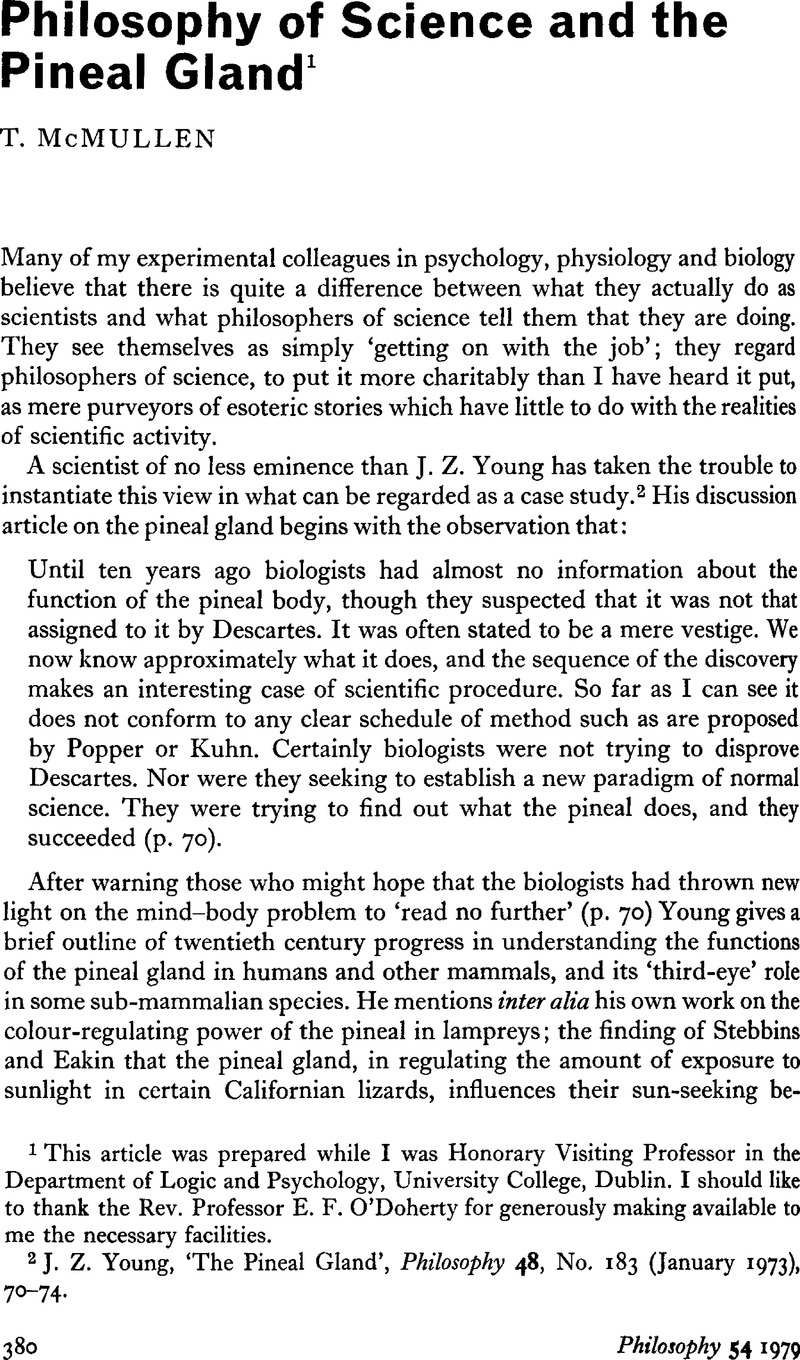Article contents
Philosophy of Science and the Pineal Gland1
Published online by Cambridge University Press: 30 January 2009
Abstract

- Type
- Discussion
- Information
- Copyright
- Copyright © The Royal Institute of Philosophy 1979
References
2 Young, J. Z., ‘The Pineal Gland’, Philosophy 48, No. 183 (01 1973), 70–74.CrossRefGoogle Scholar
3 See also the opening remarks in Feigl, H., ‘The “Orthodox” View of Theories: Remarks in Defense as Well as Critique’, Minnesota Studies in the Philosophy of Science, Vol. IV, Radner, M. and Winokur, S. (eds) (Minneapolis: University of Minnesota, 1970), 3–16.Google Scholar
4 For example, Shapere, D., ‘The Paradigm Concept’, Science, 172, No. 3984 (14 05 1971), 706–709.Google Scholar
5 See especially pp. 348–349 in Kuhn, T. S., ‘The Essential Tension: Tradition and Innovation in Scientific Research’, Scientific Creativity: Its Recognition and Development, Taylor, C. W. and Barron, F. (eds) (New York: Wiley, 1963), 344–354.Google Scholar
6 Op. cit., 70, note 2.
7 For example, see the reservations on p. 256 in Young, J. Z., ‘The Photore-ceptors of Lampreys, II. The Functions of the Pineal Complex’, Journal of Experimental Biology XII (1935), 254–270.Google Scholar
8 Stebbins, R. C. and Eakin, R. M., ‘The Role of the “Third Eye” in Reptilian Behavior’, American Museum Novitates No. 1870 (02, 1958), 1–40.Google Scholar
9 Op. cit., 267, note 7.
10 Op. cit., 32, note 8.
11 Op. cit., 36, note 8.
- 1
- Cited by




